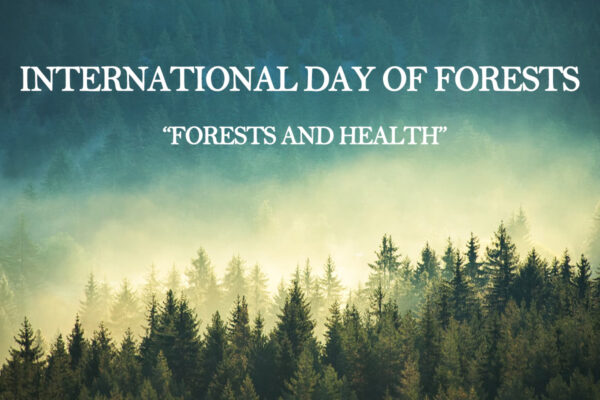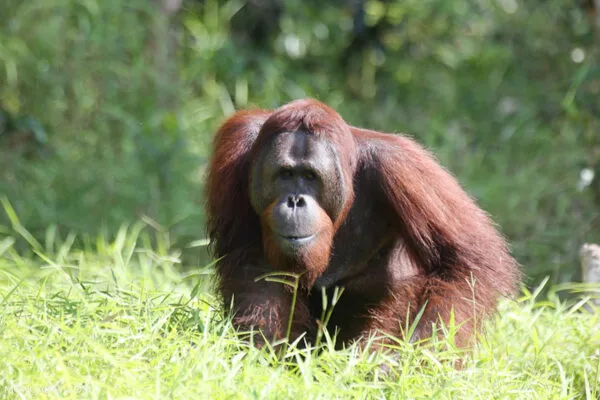Toilet Paper and Deforestation: Are We Flushing Our Forests down the Toilet?
We talk about saving our forests but destroy millions of trees annually to make toilet paper. Sounds really bizarre, right? But, true! Apparently, an average person uses about 384 trees within their lifetime in the form of toilet paper. So, as startling as it might seem, toilet paper and deforestation have a profound link that we have failed to contemplate.
While only 25 percent to 30 percent of the world’s population uses toilet paper, over 83 million rolls of toilet paper are produced every day.
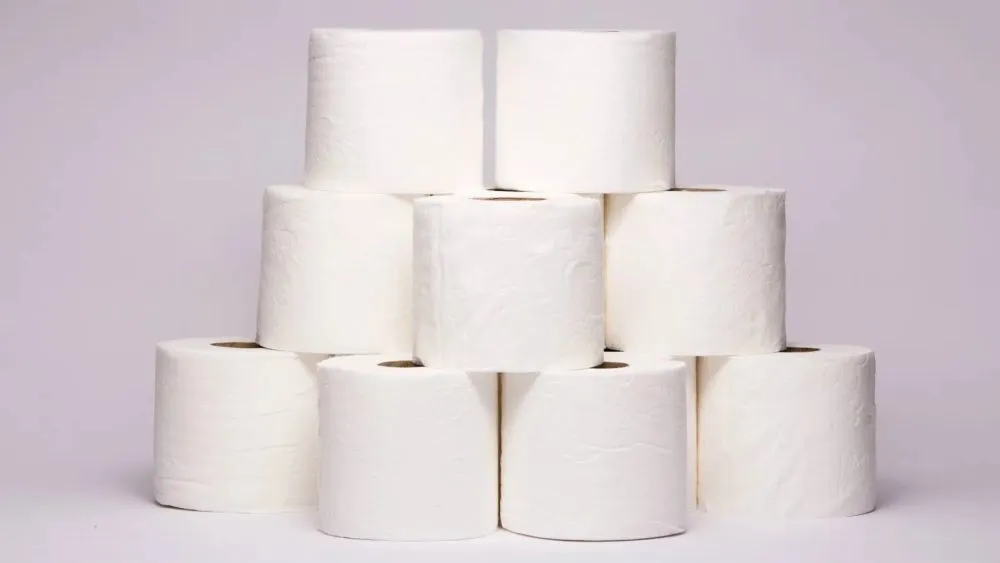
An average person uses about 384 trees within their lifetime in the form of toilet paper | Image: Reuters/Lucas Jackson
According to a World Watch magazine issue, worldwide, an equivalent of almost 270,000 trees are either flushed or dumped in landfills every day and around 10 percent of that total is attributed to toilet paper.
The numbers come as no surprise as the US has the largest consumer base for toilet paper, followed by France and the UK in second and third place, respectively.
Toilet Paper and Deforestation
Traditional toilet paper manufacturers use virgin trees to make their products, destroying many forests blindly. In many forests, these virgin trees are old-growth which means it took them at least 100 years to reach maturity.
A 2017 Greenpeace report discovered that “a large extent of the Swedish Great Northern Forest and the biodiversity contained within it is being threatened by the timber industry.” It was also found that the forest was being cut down owing to the ever-increasing demand for virgin pulp, much of which is being used for tissue products.
Another report from 2019, titled “The Issue with Tissue” by the National Defence Council and Stand Earth about the Canadian Boreal revealed that more than 28 million acres of boreal forest disappeared between 1996 and 2015.
After the report, the NRDC called on Protector & Gamble, the manufacturer of Charmin tissue paper, to end the wasteful and destructive practice by changing its toilet paper manufacturing through solutions that other companies are also adopting.
Logging old-growth forests don’t just destroy trees – these forests are networks of plants, animals, insects, microbes, and fungi that function as an ecosystem. If one part of the ecosystem is removed, it upsets the delicate balance that keeps the system together.
Deforestation brought about by traditional toilet paper companies causes harm to traditional territories of Indigenous communities, loss of biodiversity, endangerment and extinction of entire species, increased risk of forest fires, and destruction of the carbon sinks.
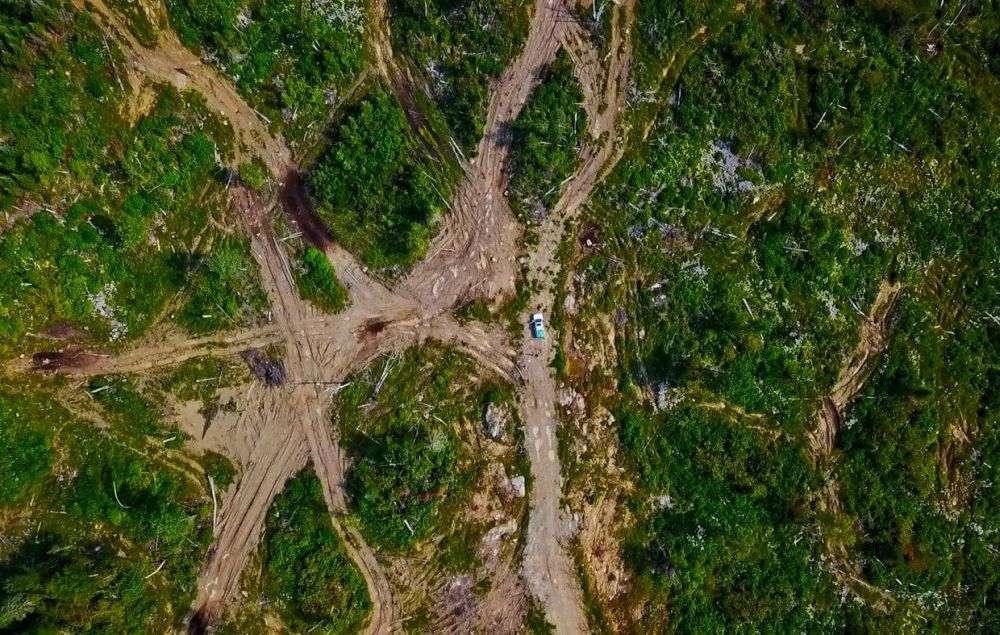
Deforestation in the boreal forest has exacerbated, much of which is contributed by toilet paper manufacturing | Image: NRDC
Deforestation contributes to 15 percent of global greenhouse gas emissions. Traditional toilet paper companies are directly accountable for these emissions by persisting to log lush forests for single-use paper products.
The biggest tissue producers – Protector & Gamble, Kimberly-Clark, and Georgia-Pacific, perform poorly as their brands contain zero recycled content, irresponsibly relying exclusively on virgin pulp even as threats to our forests increase.
Greenpeace International contends that Kimberly-Clark, the maker of two popular brands, Cottonelle and Scott, receives about 22 percent of its pulp from producers who cut trees in Canadian boreal forest where some trees are centuries old.
Deforestation in Three Key Forests
Trees for manufacturing toilet paper can be sourced from anywhere around the world, but a few key forests are being wiped out.
Boreal Forest in the Arctic
The boreal forest encircling the Arctic on the northern edge of Europe, Asia, and North America is the world’s largest land ecosystem and the largest carbon-dense forest. As per the estimate of scientists, the boreal holds about 12 percent of the world’s carbon stores.
This forest covers 6.6 million square miles of the earth’s total land surface and is home to plants and animals adapted to endure the difficult climate and extreme cold.
Acting as a carbon sink, every acre of the boreal forest holds about 2 tons of carbon dioxide a year. As boreal forests possess massive carbon sequestration abilities, their destruction can release that this stored carbon into the atmosphere, exacerbating the threats of global warming.
Humans have been cutting the boreal since the turn of the last century. In the past two decades, the Canadian boreal has lost an area the size of Ohio to clear-cutting for paper products and other consumer goods.
Sweden’s boreal forest face many challenges as the lax regulations over half of the country’s forests are less than 60 years old, and the landscape has been marred with decades of deforestation.
South-eastern United States
The varied forests of the south-eastern United States span 214 million acres across 13 states, from Texas to Virginia. These temperate forests are home to 3000 species of plants, nearly 600 species of birds, and almost 250 animal species.
Southern forests also provide the ideal climate for reptiles and amphibians to live there. The trees take 80 to 100 years to reach maturity.
However, since the first European settlers arrived on the continent, over 99 percent of old-growth forests have been wiped out.
Nearly all old-growth forests in the Southern United States have been cut down over the years. The area has been inflicted with centuries of intense logging for development and consumer goods like toilet paper.
Presently, southern forests supply about 19 percent of the global paper and pulp supply, including pulp intended for toilet paper and paper towels.
The Amazon Rainforest
The Amazon rainforest covers nearly 3 million square miles of land across eight countries in South America, giving life to many and acting as a carbon sink.
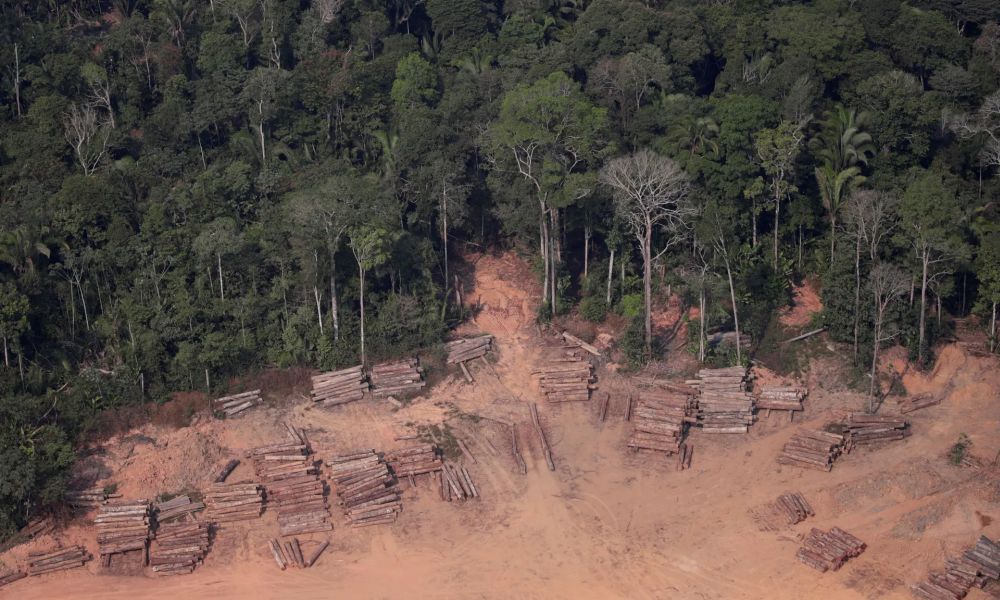
Amazon rainforest has endured immense exploitation at the hands of illegal loggers | Image: Ueslei Marcelino/Reuters
The Amazon store around 90-140 billion metric tons of carbon dioxide in its trees and soil. But recently, the rainforest is emitting more greenhouse gases than it absorbs, primarily because of deforestation and wildfires.
Traditional toilet paper manufacturers are clearing unsustainable amounts of pristine forest to make way for eucalyptus plantations. The eucalyptus is logged, turned into paper pulp, and sold to companies around the world.
The world has already lost 46 percent of its forests, and traditional paper companies contribute to a major part of the problem. While some of the big toilet paper manufacturers have dipped their toes in more sustainable practices, it is just too little, too late.
What can be done?
Fifty percent of the fibers used to manufacture pulp for tissue goods come from recycled sources, while the rest comes from natural forests, plantations, and tree farms.
Water is the most reasonable and safest alternative to toilet paper. Bamboo toilet paper, when sourced responsibly, is more sustainable than virgin wood pulp (though it does present some logistical challenges).
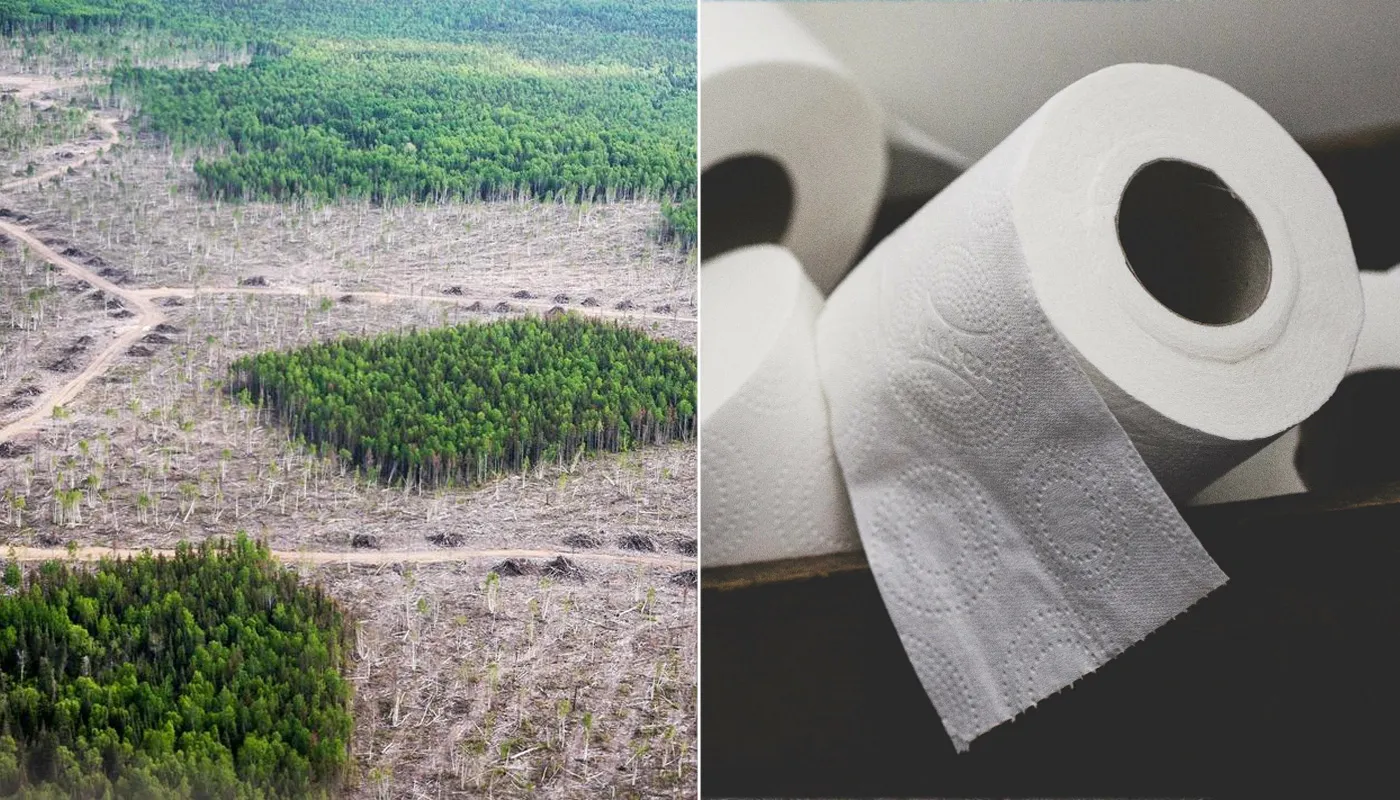
Toilet Paper and Deforestation: Are We Flushing Our Forests down the Toilet?
Environmentalists are emphasizing tissue products for reasons besides tree loss. Turning a tree to paper requires more water than turning paper back into the fiber.
Moreover, many brands use tree pulp use toxic chlorine-based bleach for greater whiteness, and tissue made from recycled paper produces less waste tonnage that would otherwise end up in landfills.
Toilet paper and deforestation go hand in hand unless we find alternatives to this product. Adapting more sustainable practices is the only way to reduce the burden that the toilet paper industry has implicated on the planet’s forests.
